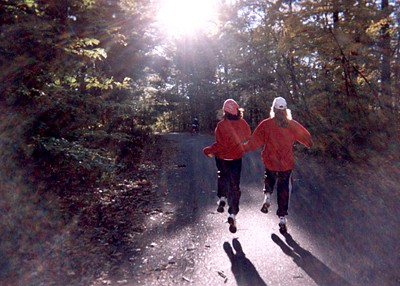All Nonfiction
- Bullying
- Books
- Academic
- Author Interviews
- Celebrity interviews
- College Articles
- College Essays
- Educator of the Year
- Heroes
- Interviews
- Memoir
- Personal Experience
- Sports
- Travel & Culture
All Opinions
- Bullying
- Current Events / Politics
- Discrimination
- Drugs / Alcohol / Smoking
- Entertainment / Celebrities
- Environment
- Love / Relationships
- Movies / Music / TV
- Pop Culture / Trends
- School / College
- Social Issues / Civics
- Spirituality / Religion
- Sports / Hobbies
All Hot Topics
- Bullying
- Community Service
- Environment
- Health
- Letters to the Editor
- Pride & Prejudice
- What Matters
- Back
Summer Guide
- Program Links
- Program Reviews
- Back
College Guide
- College Links
- College Reviews
- College Essays
- College Articles
- Back
A Love Song to Running MAG
Each step echoes with astounding clarity. The world opens as I stride forward. I have no wings, but I fly nonetheless, soaring over the weathered roads. My smile is nothing compared to the brightness that washes over me. The world turns to light. Happiness is everywhere, radiating in massive waves from my soul, set on fire. The struggle leaves my pounding chest, my burning calves, and my heaving lungs as I barrel forward. I am joy, energy, and life. I am a runner. I love to run, and this is what defines me as one of the most misunderstood athletes there is.
The body’s natural instinct is to run to find food. A study of fossils by National Geographic in 2004 “identified a range of physical traits that suggest human ancestors evolved as distance runners. The adaptations helped them chase down prey and compete more effectively with the speedier carnivores on the open plains of Africa.” Chasing prey is no longer necessary in the developed world, but running now provides us with a different kind of nourishment: food for the soul. The peace and solace in nature, the rhythmic pounding of our feet, and the awareness of ourselves in the moment fills us up and recharges our tanks to meet the demands of the world.
In addition to being spiritually fulfilling, running is one of the best types of exercise. It burns more calories than almost any other activity, which aids in preventing obesity, America’s latest “epidemic.” According to Runner’s World, running can also help prevent type two diabetes, heart disease, high blood pressure, stroke, some cancers, and many other health problems.
I’ve heard too many times that yes, running has benefits, but they come at the expense of your knees. I have been warned (and feared myself) that the knees are weakened and essentially ruined by the sport. However, recent studies prove the opposite. Boston University researcher David Felson found that people with knee arthritis didn’t have much of a running history, and people who ran didn’t have an increased risk of osteoarthritis. What, then, is this “runner’s knee” we always hear about? Put simply, runner’s knee is pain between the kneecap and the thighbone, caused by biomechanical issues, poorly conditioned quads, or tight hamstrings. Contrary to popular belief, running itself doesn’t compromise knees and health, but actually improves both.
With benefits like a well-fed soul and a healthy body, running seems unsurpassable by any other activity. Why is it, then, that so many people “hate to run” or “just can’t do it” or think that runners are crazy people? The answer, I think, is that running isn’t easy. In a society where convenience and simplicity are held in high regard, it’s no wonder that so many shy away from an activity that takes time and effort to perfect and enjoy. When I started to run the one-mile loop in my neighborhood, I barely knew what I was doing. It was so tough, I don’t even know why I continued.
One day, though, I realized that I loved to run. The act has a sort of song to it, a rhythm made by my feet, my breath, and my very existence. It gave me the courage to explore new places and try new things. It made me the person I am today. Whether the sun is scorching my skin or hidden by rainclouds, I hear the music. Whether the leaves are soft green, vibrant red, or crumpled on the ground, I hear the music. Through wind, snow, and ice, the music still plays. Anyone can be a runner, and anyone can strive to hear the song. As for those stubborn few who will forever scorn running? Let the runners hear their song in peace.
And whatever you do, don’t tell us that our knees will pay the price.

Similar Articles
JOIN THE DISCUSSION
This article has 0 comments.

Running: The Most Misunderstood Sport